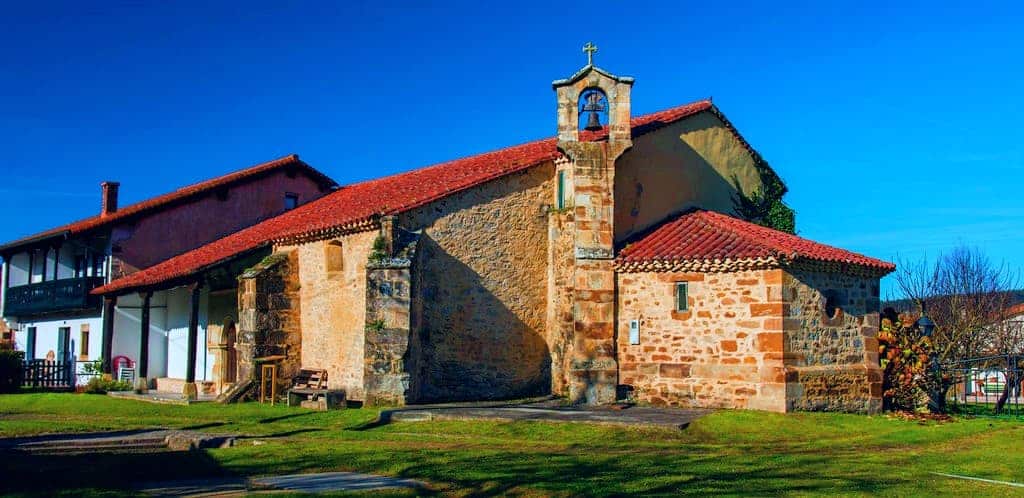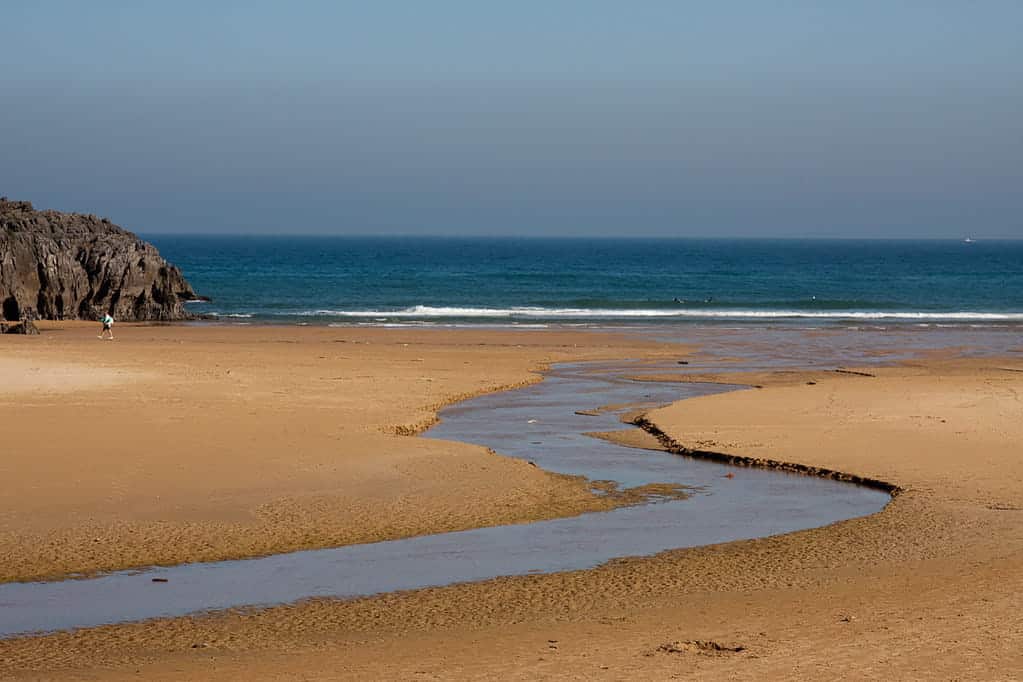
Güemes is a landmark stop on the Northern Way to Santiago de Compostela. This small village in Cantabria is primarily known for the “La Cabaña del Abuelo Peuto” albergue, founded by Father Ernesto. This place offers pilgrims a unique and enriching experience of hospitality.
From here, the route towards Santander offers two options: an official route that passes through Loredo and another coastal variant that crosses stunning cliffs and beaches, providing panoramic views of the Cantabrian Sea. Both routes converge in Somo, from where a ferry can be taken to cross the bay to Santander.
But let’s not rush, before we depart, we want to show you the main points of interest in Güemes. First, we will give you more compelling reasons to choose the Northern Way as your route to reach the Cathedral of Santiago.
Índice de contenidos
Why choose the Northern Way?
As specialists in Santiago Camino trips, we will take the liberty to talk to you about this route and why you should choose it. Afterwards, we’ll tell you about Güemes.
The Northern Way is one of the most spectacular Jacobean routes and, at the same time, least crowded, especially when compared to the French Way.
Some opt for more direct routes, like the Santiago Camino from Ourense, which offers a shorter experience but with a strong connection to Galician culture. Others prefer the challenge of routes like the Primitive Way from Lugo. The entire route stands out for its toughness and historical character, being the first official path to the Apostle’s tomb.
Unlike other routes, here pilgrims enjoy the perfect combination of mountains and sea, passing through villages with great historical and cultural richness.
The major advantage of the Northern Way is the opportunity to travel through one of the most beautiful regions of Spain, combining history, nature, and tradition at every stage. This route allows you to discover majestic cities like San Sebastián and Santander, as well as small villages like Güemes.
Another positive point is the diversity of landscapes. Those seeking a coastal alternative might consider the Santiago Camino from Irún, which offers a spectacular journey through the Basque Country before entering Cantabria and Asturias.
Finally, the peacefulness is another strong reason to choose this itinerary. While the French Way can be crowded at certain times of the year, the Northern Way offers a more leisurely and personal experience, with more contact with nature and fewer crowds at the albergues.
Most popular places to visit in Güemes
Although small in size, Güemes has several points of interest that you should not miss during your visit. Here are the most notable ones:
Church of San Vicente Mártir
The Church of San Vicente Mártir is one of the main historical and architectural landmarks of the village. This temple, of medieval origin, has witnessed the passing of pilgrims over the centuries and houses elements of great artistic value. Its structure reflects the evolution of architectural styles in Cantabria, with details that range from Romanesque to Baroque.
One of its greatest attractions is its main altarpiece, a beautifully crafted piece dating back to the 18th century. Additionally, the surrounding landscape, with views of the lush Cantabrian countryside, makes it an ideal spot to pause on the Northern Way.
Albergue La Cabaña del Abuelo Peuto
This albergue, although located in Bareyo, is one of the major attractions in the area. More than just a place to stay, it is a gathering space for pilgrims of the Camino de Santiago. Its welcoming atmosphere, coupled with Father Ernesto’s talks, makes this place a unique spiritual stop.
The traditional architecture of the albergue, surrounded by gardens and nature, also adds to its picturesque charm.
San Julián Chapel

Also in Bareyo, the San Julián Chapel is a monument of great historical value that has witnessed the religious life of the village for centuries. Located in a peaceful setting, it invites meditation and contemplation. Its interior holds artistic details of interest, such as ancient altarpieces, which reflect the region’s cultural past.
Church of Santa María de Bareyo
Likewise, just a few kilometres away is the parish church of Santa María de Bareyo, one of the gems of Romanesque architecture in Cantabria. This church stands out for its sculpted capitals and well-preserved structure. It is a must-visit for those who appreciate medieval architecture.
Nearby beaches: Galizano beach and Ajo beach

Although it does not have direct access to the sea, it is very close to some of the best beaches in Cantabria.
- In Ribamontán del Mar, Galizano beach is known for its natural beauty, with cliffs and trails perfect for hiking.
- On the other hand, Ajo beach offers a more open setting, ideal for leisurely walks and panoramic views of the Cantabrian Sea.
Hiking routes and viewpoints
The surrounding area is full of hiking routes that allow you to discover the natural wealth of Cantabria. Among the most popular are the paths that connect the village with Bareyo and other points of interest. From some natural viewpoints, such as those near Galizano, you can enjoy stunning views of the Cantabrian coastline.
These places make Güemes a charming destination, ideal for exploring both its cultural heritage and natural landscapes.
This small Cantabrian village offers a unique experience, especially for those interested in the Camino de Santiago or looking to enjoy an authentic rural setting. Whether you are walking the Jacobean route or simply seeking to unwind in an idyllic environment, you will be amazed by its hospitality, landscapes, and cultural richness.
Don’t hesitate any longer—come and discover this corner of Cantabria, where every step leads to a new unforgettable experience. Güemes awaits you with open arms!









